Abstract
This paper describes a search for Gram-negative bacteria in an operating theatre and the steps taken to reduce the level of environmental contamination.
A high rate of infection in clean wounds prompted a bacteriological survey. Potential sources of infection found, and the measures employed are described in the hope that others may be encouraged to examine familiar equipment critically and to improve hygiene even in old premises.
The choice, design, use and care of cleaning and sterilizing equipment were open to criticism. In particular, a currently popular floor-scrubbing machine provided a breeding ground for Pseudomonas aeruginosa and was distributing it in the theatre environment.
Full text
PDF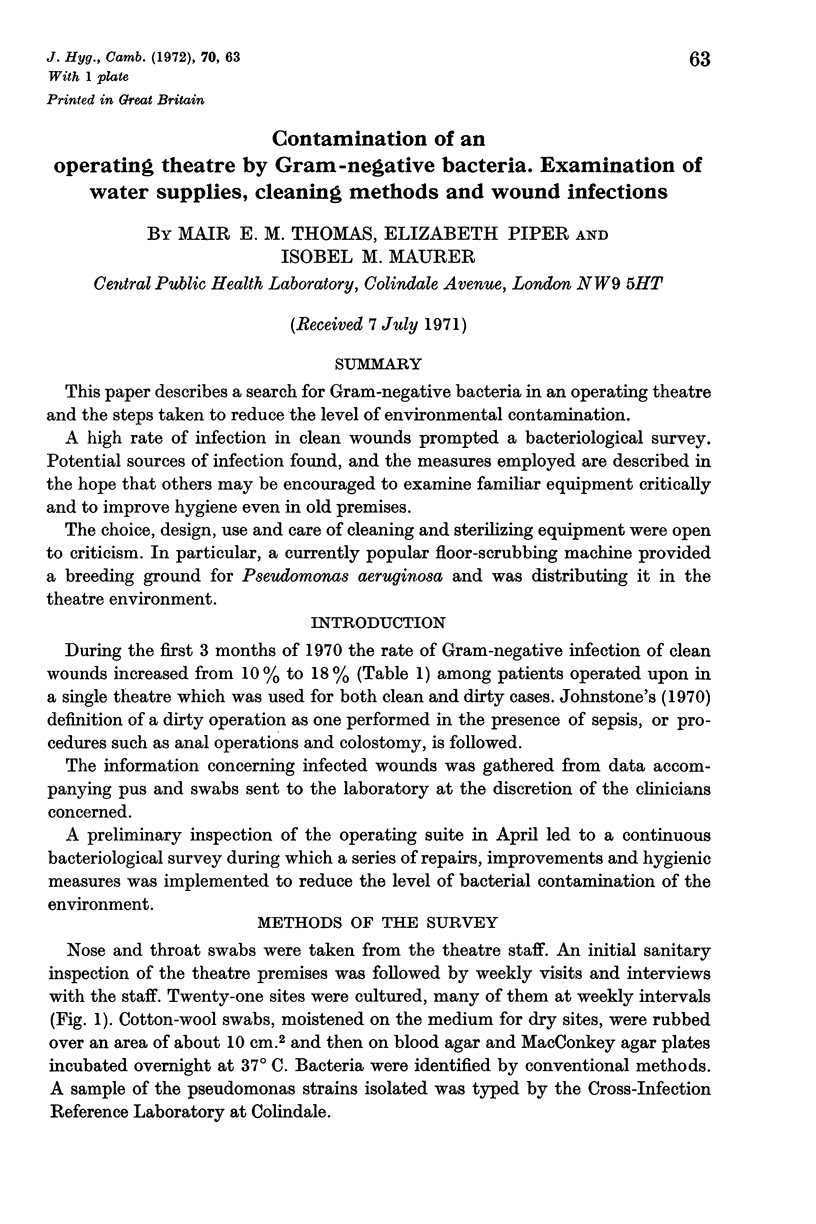
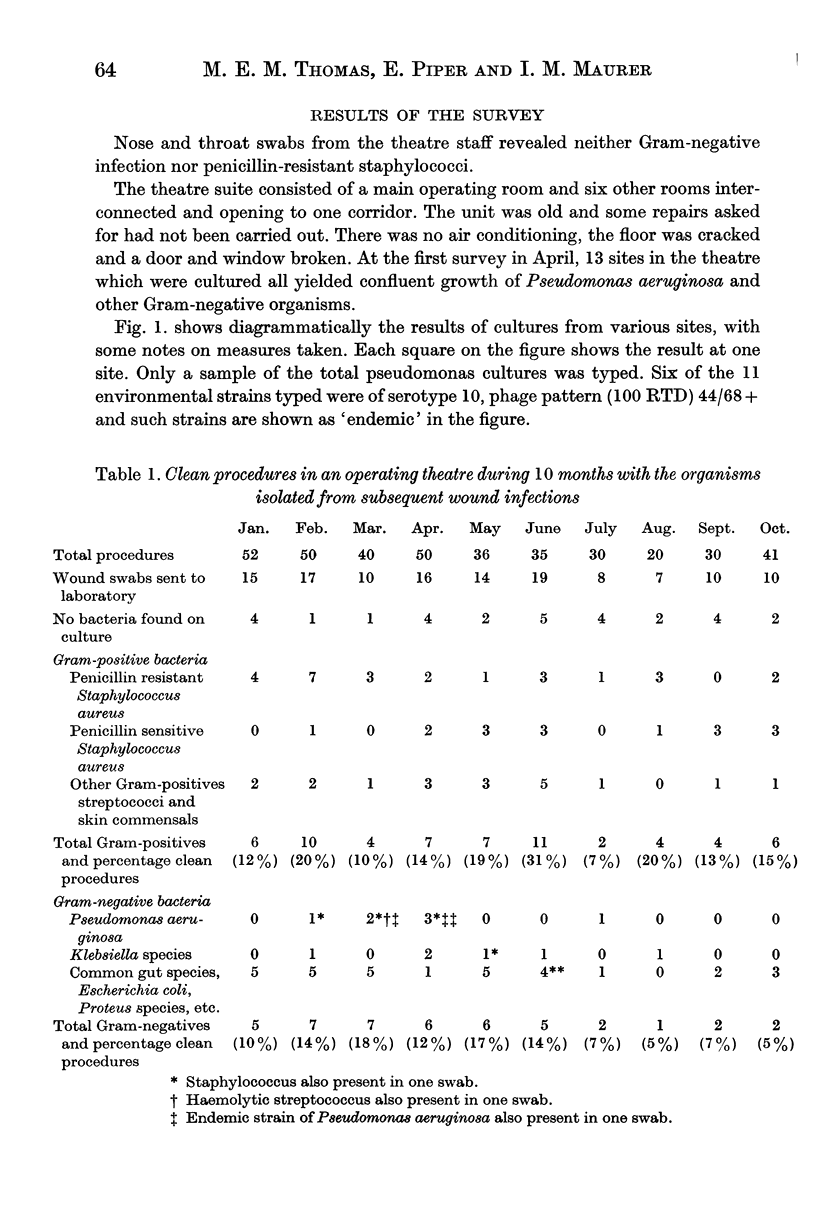
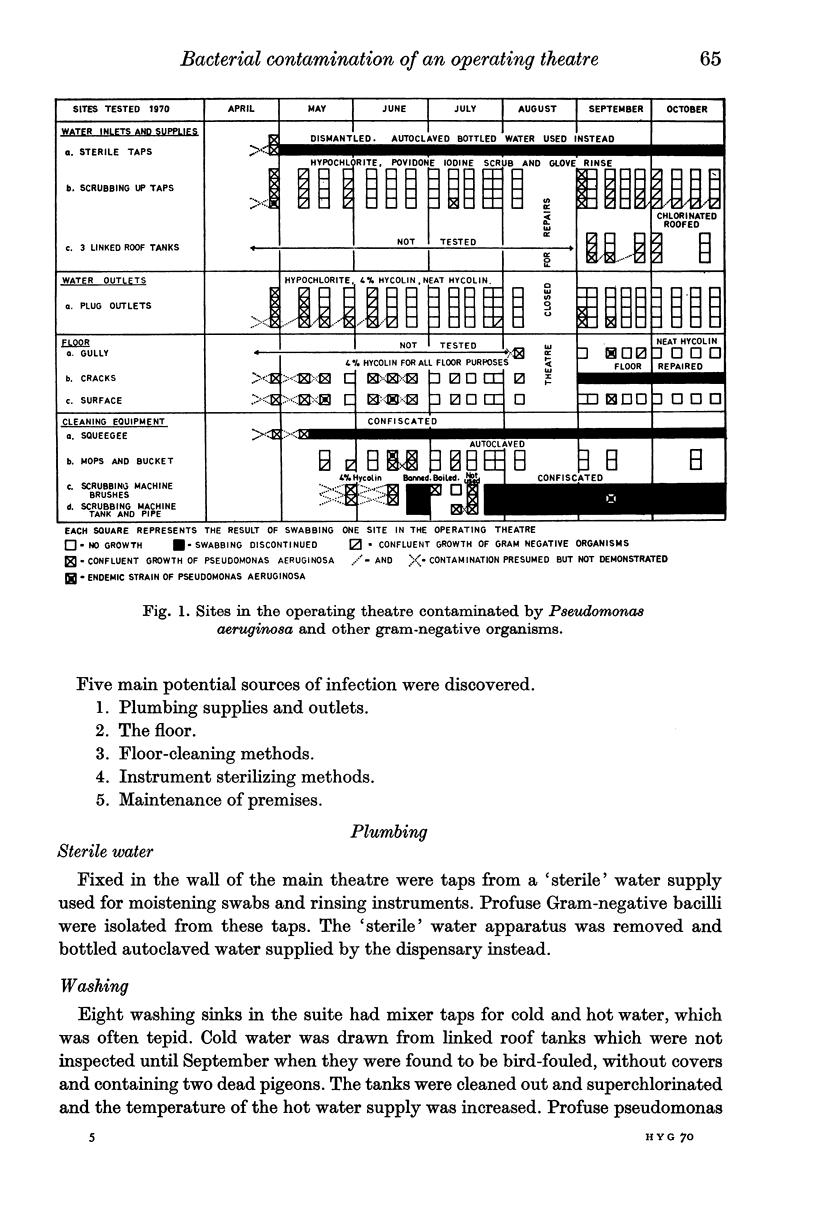
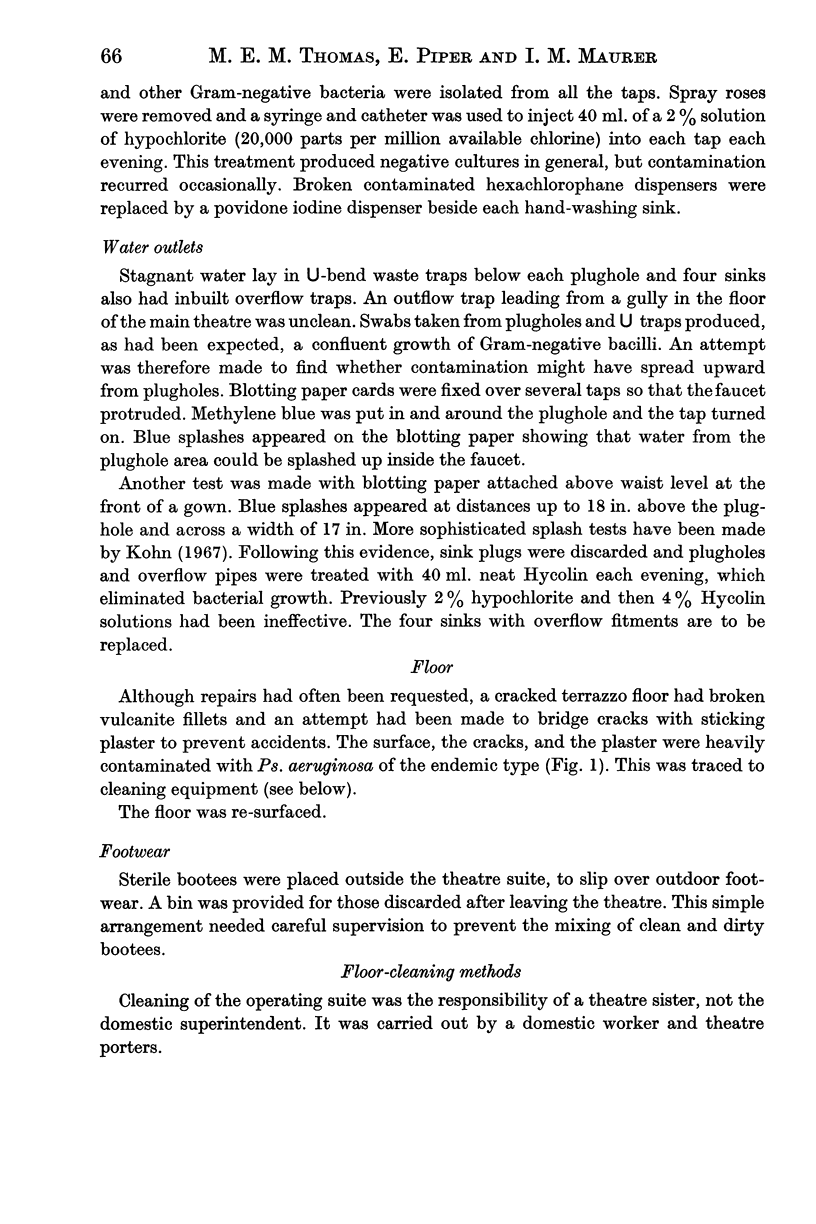
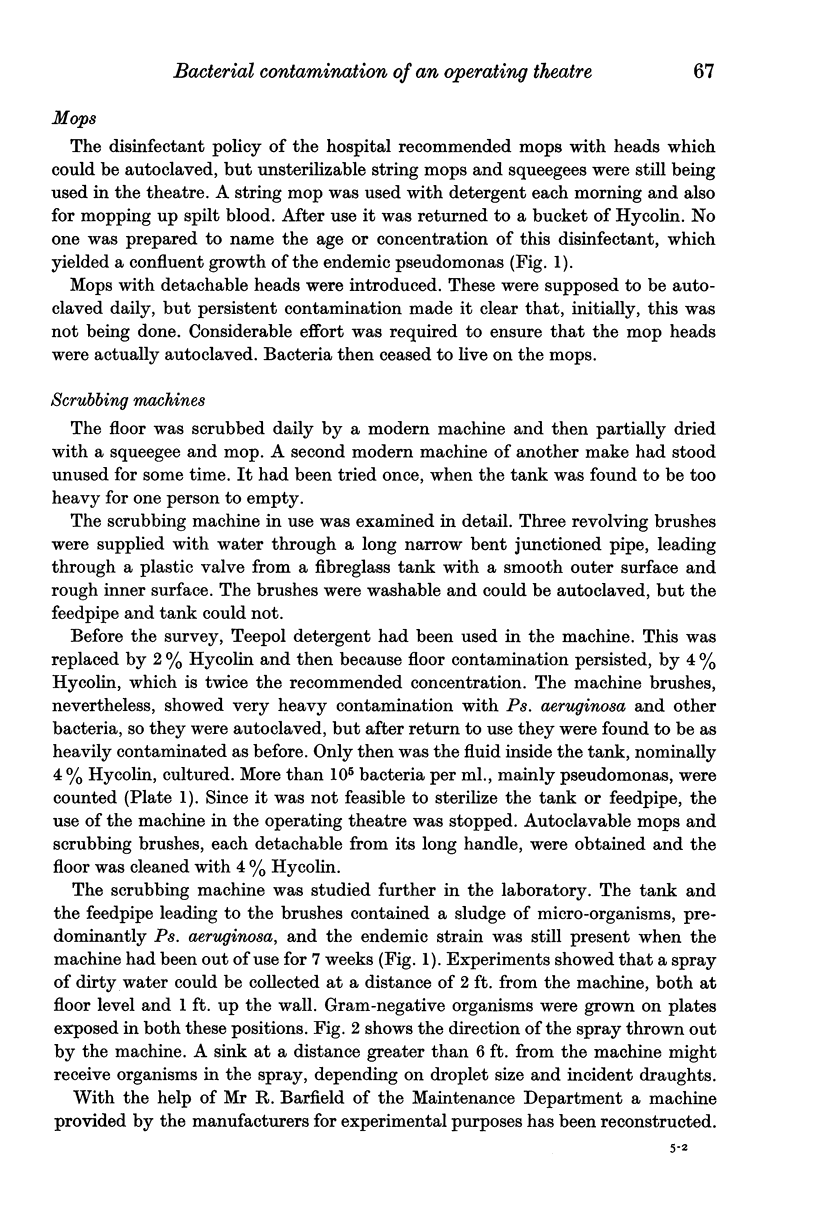
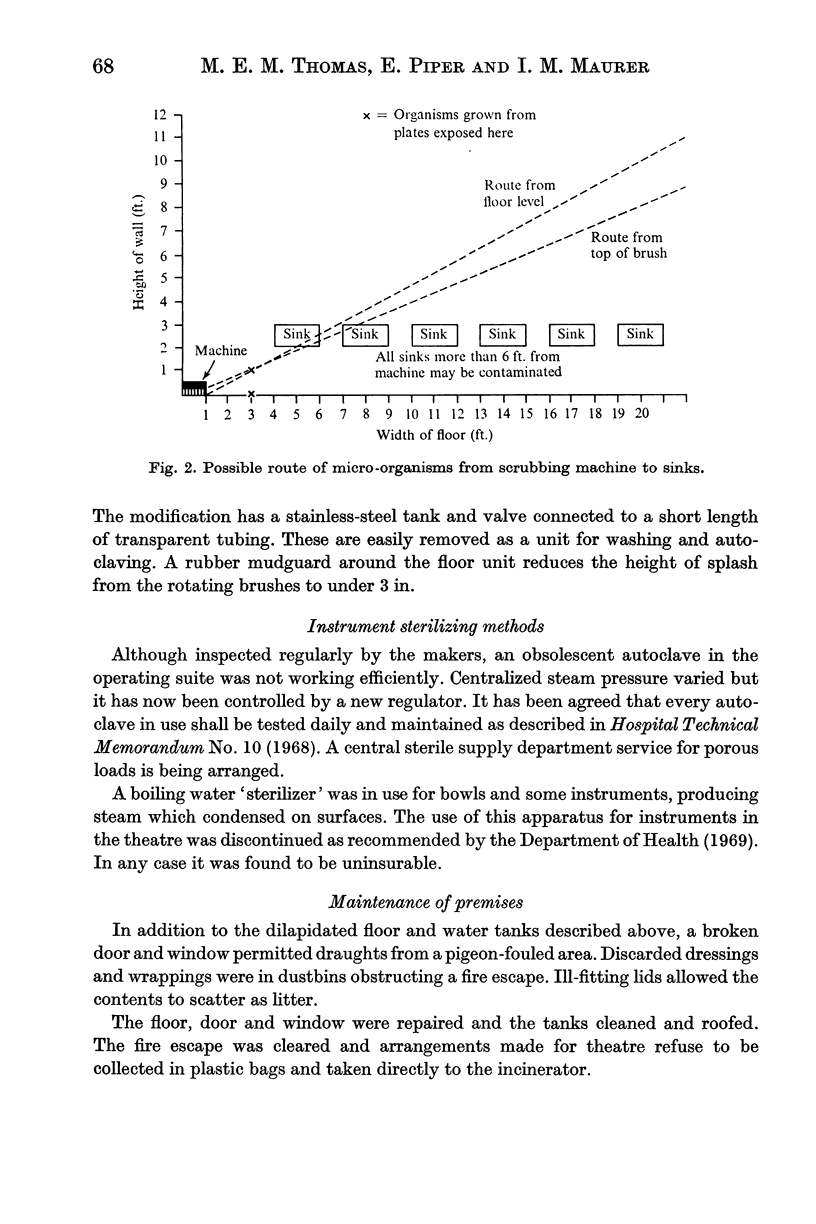
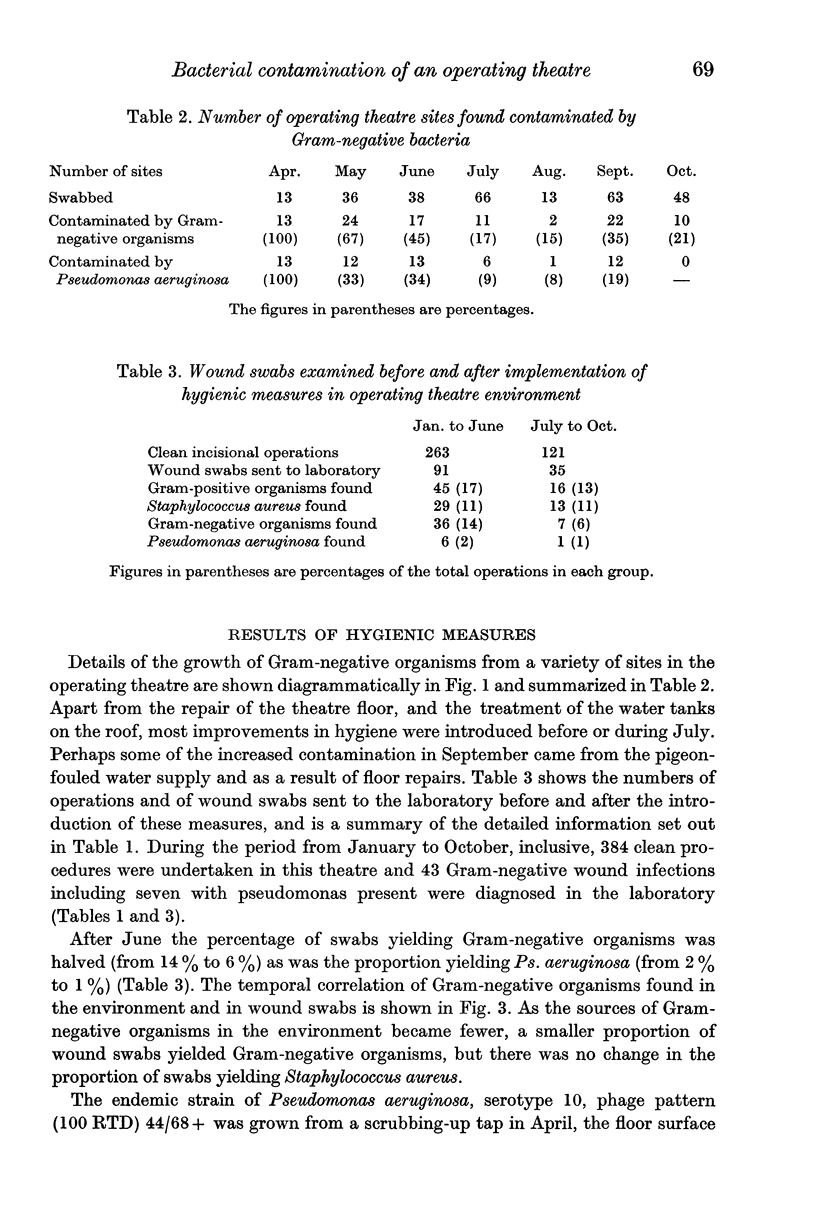
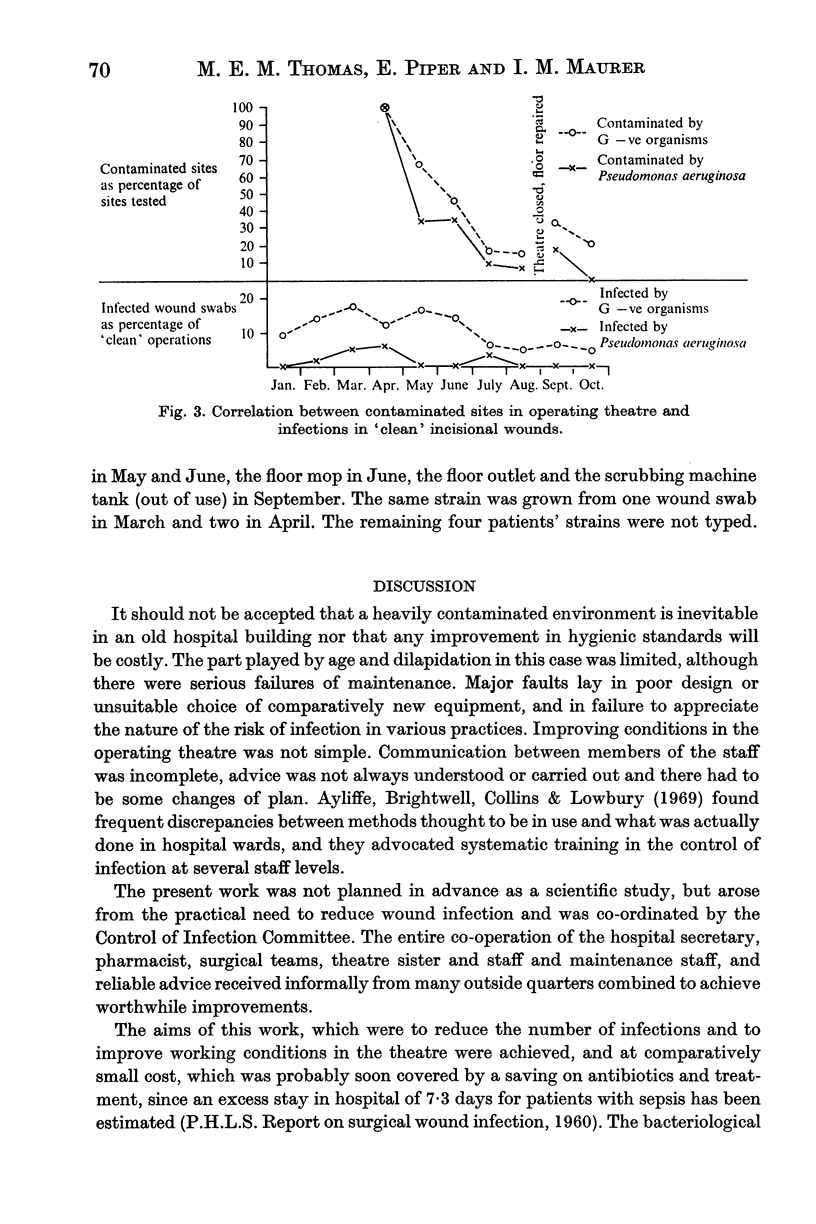
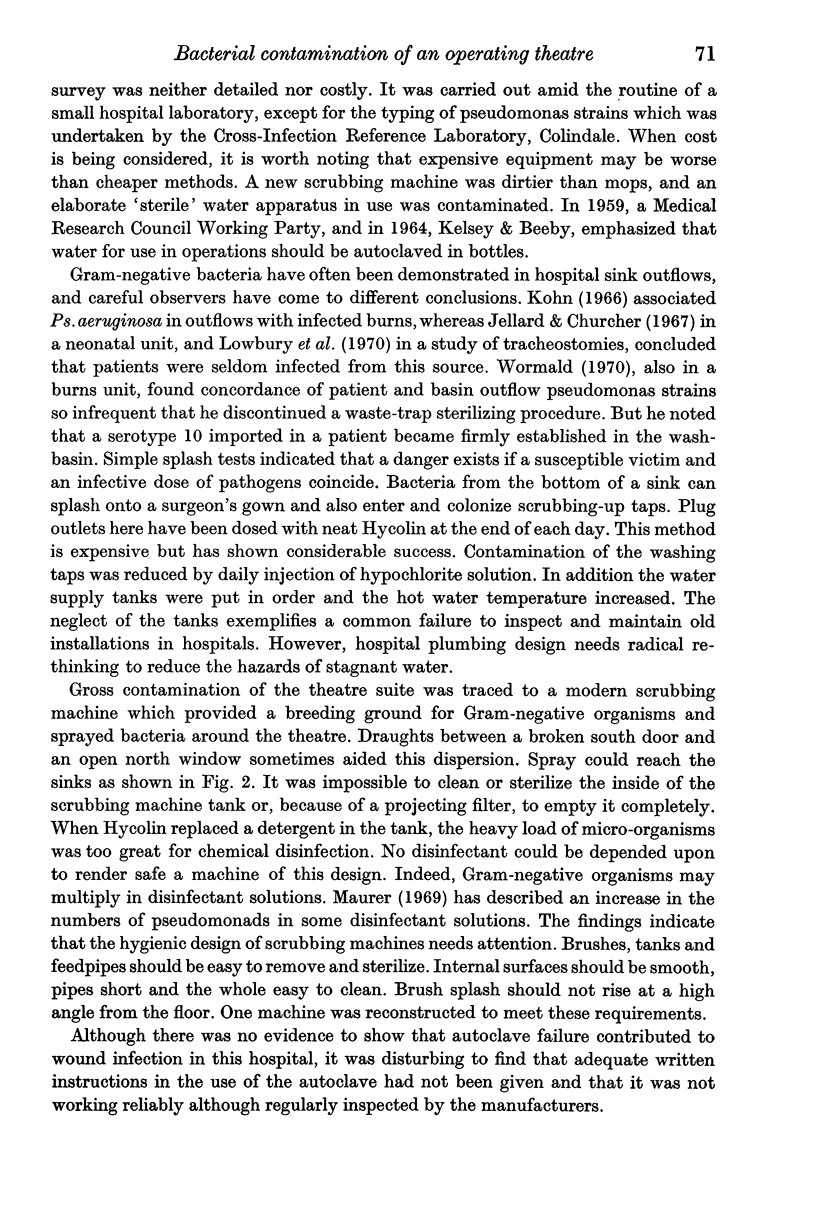
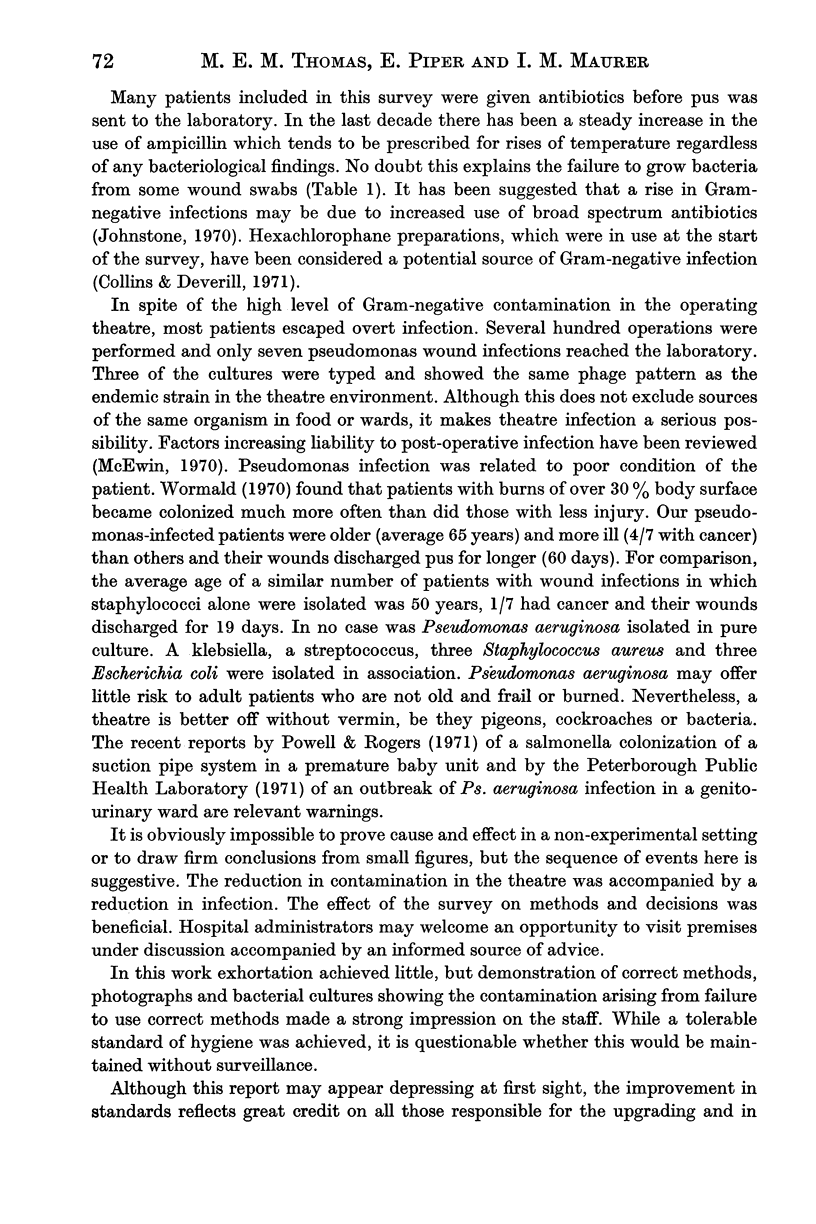
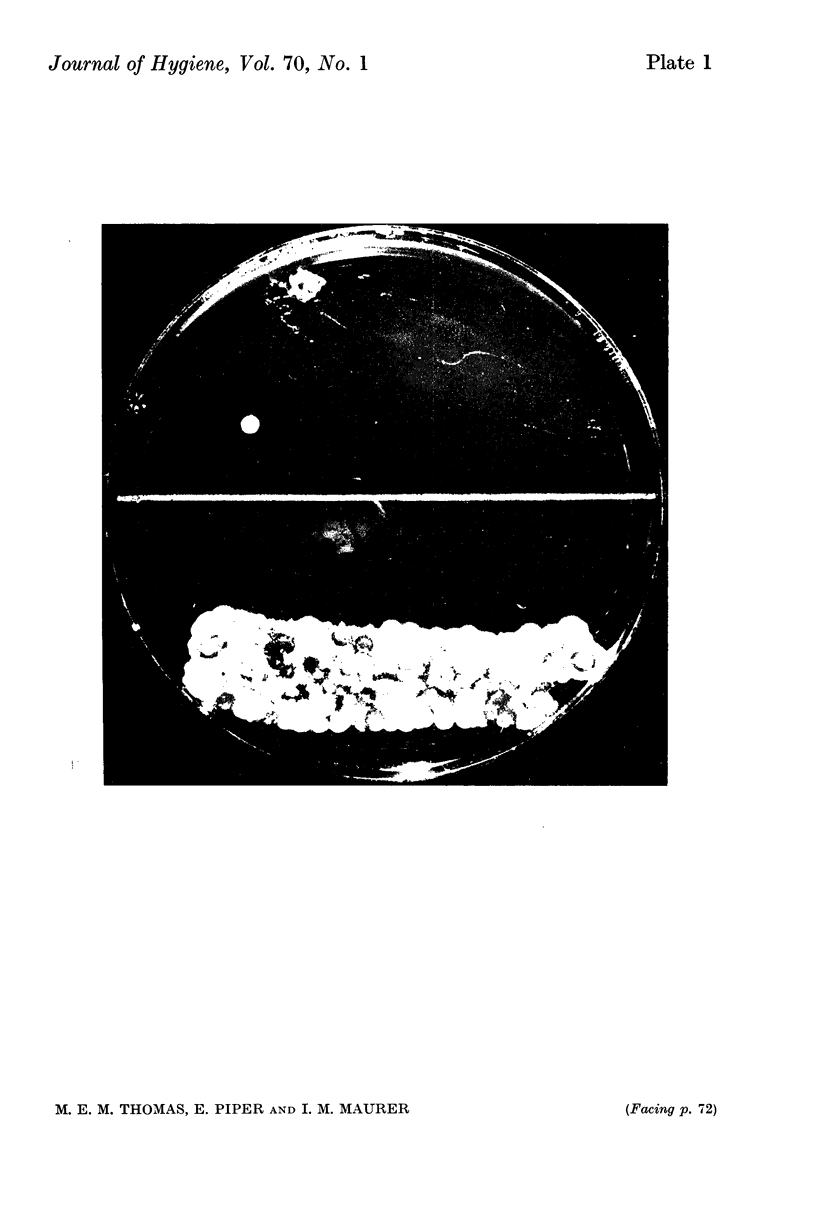
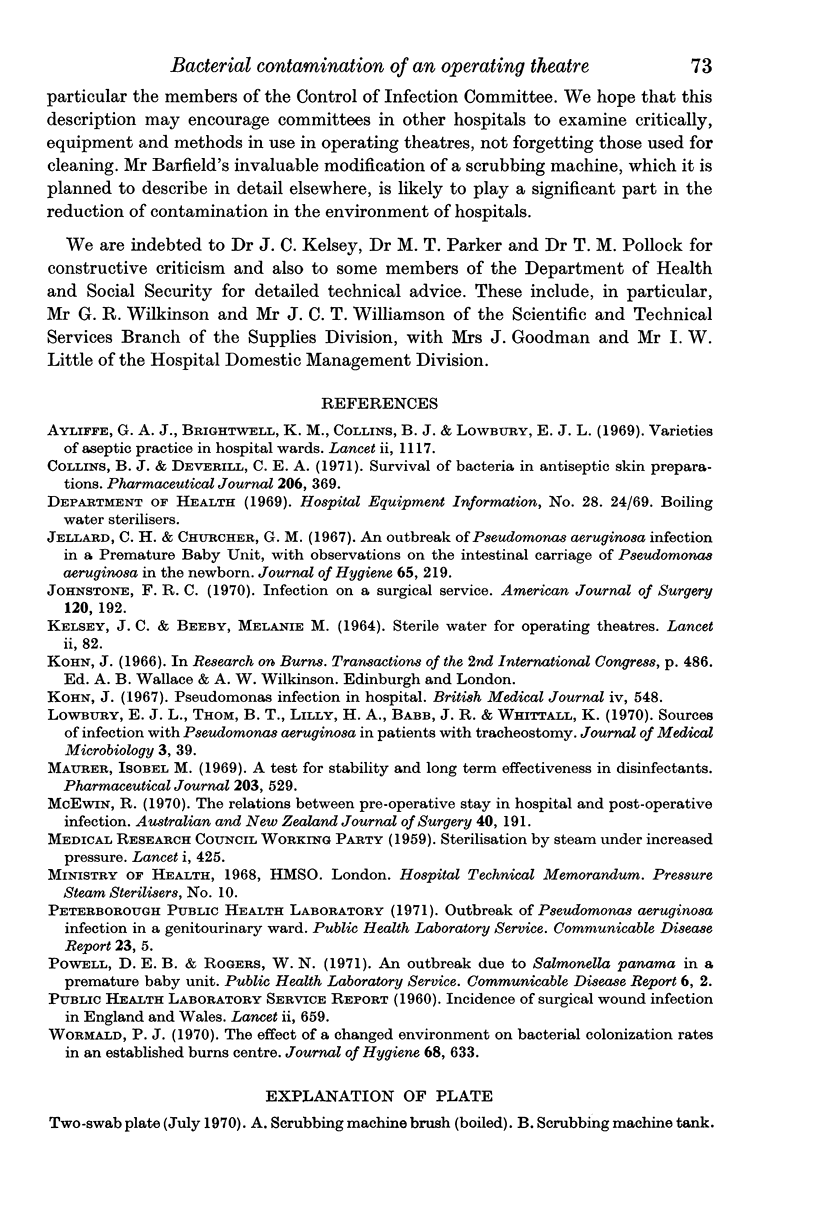
Images in this article
Selected References
These references are in PubMed. This may not be the complete list of references from this article.
- Ayliffe G. A., Collins B. J., Brightwell K. M., Lowbury E. J. Varieties of aseptic practice in hospial wards. Lancet. 1969 Nov 22;2(7630):1117–1120. doi: 10.1016/s0140-6736(69)90716-8. [DOI] [PubMed] [Google Scholar]
- Johnstone F. R. Infection on a surgical service. Present incidence compared with that of 1957. Am J Surg. 1970 Aug;120(2):192–197. doi: 10.1016/s0002-9610(70)80110-6. [DOI] [PubMed] [Google Scholar]
- Kohn J. Pseudomonas infection in hospital. Br Med J. 1967 Dec 2;4(5578):548–548. doi: 10.1136/bmj.4.5578.548. [DOI] [PMC free article] [PubMed] [Google Scholar]
- Lowbury E. J., Thom B. T., Lilly H. A., Babb J. R., Whittall K. Sources of infection with Pseudomonas aeruginosa in patients with tracheostomy. J Med Microbiol. 1970 Feb;3(1):39–56. doi: 10.1099/00222615-3-1-39. [DOI] [PubMed] [Google Scholar]
- McEwin F. The relation between preoperative stay in hospital and postoperative infection. Aust N Z J Surg. 1970 Nov;40(2):191–194. doi: 10.1111/j.1445-2197.1970.tb04057.x. [DOI] [PubMed] [Google Scholar]
- Wormald P. J. The effect of a changed environment on bacterial colonization rates in an established burns centre. J Hyg (Lond) 1970 Dec;68(4):633–645. doi: 10.1017/s0022172400042571. [DOI] [PMC free article] [PubMed] [Google Scholar]



